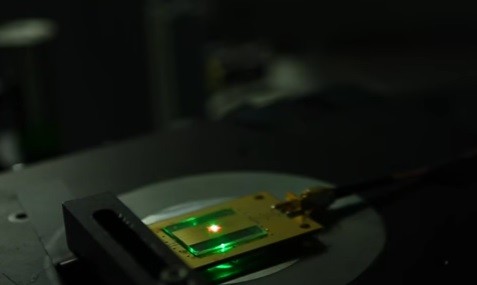By Ana Verayo, | December 20, 2016

Despite its incredibly minuscule size, this atomic radio can also play Christmas songs. (YouTube)
How tiny is the smallest radio in the world? Harvard physicists have developed a radio receiver out of the building blocks of two atoms from a diamond.
Like Us on Facebook
Despite its incredibly minuscule size, this atomic radio can also play Christmas songs as engineers applied basic radio physics to this small-scale device.
According to Leah Burrows from the John A. Paulson School of Engineering and Applied Sciences, radios possess five basic components which are the power source, receiver, transducer that can convert frequencies from high electromagnetic signals to low frequency currents, a tuner, and then speaker and/or headphones to convert these frequencies into sound.
The Harvard team led by Marko Loncar and Linbo Shao replaced some of these basic components with atoms. They made this tiny radio from diamond crystals and its carbon atoms.
These diamond carbon atoms were replaced with nitrogen atoms with holes beside each other. These nitrogen atom pairs with these holes can create power and serves as the receiver. This atomic pair is called the nitrogen vacancy center.
For the power source, a green laser activates the electrons in the diamonds in this nitrogen vacancy center. As a radio wave passes through these activated electrons around the nitrogen vacancy center, this green laser turns into red light, becoming the receiver.
Researchers say that nitrogen vacancy centers are also great building blocks for tiny machines as they can naturally emit light.
There is also an electromagnet near this red light receiver that changes the frequency, making this the tuner. However, this atomic radio is only a red light that has not yet emitted any sound.
A special device known as a photodiode can convert this red light back into the electric current so speakers or headphones can detect this current and sound can be broadcasted.
Loncar also revealed that this small radio could even work in the highest temperatures of 662 degrees Fahrenheit due to its diamond properties, suggesting that this tiny machine can work in space, inside the human body or other harsh environments.
This new study was published in the journal Physical Review Applied.
-
Use of Coronavirus Pandemic Drones Raises Privacy Concerns: Drones Spread Fear, Local Officials Say

-
Coronavirus Hampers The Delivery Of Lockheed Martin F-35 Stealth Fighters For 2020

-
Instagram Speeds Up Plans to Add Account Memorialization Feature Due to COVID-19 Deaths

-
NASA: Perseverance Plans to Bring 'Mars Rock' to Earth in 2031

-
600 Dead And 3,000 In The Hospital as Iranians Believed Drinking High-Concentrations of Alcohol Can Cure The Coronavirus

-
600 Dead And 3,000 In The Hospital as Iranians Believed Drinking High-Concentrations of Alcohol Can Cure The Coronavirus

-
COVID-19: Doctors, Nurses Use Virtual Reality to Learn New Skills in Treating Coronavirus Patients







